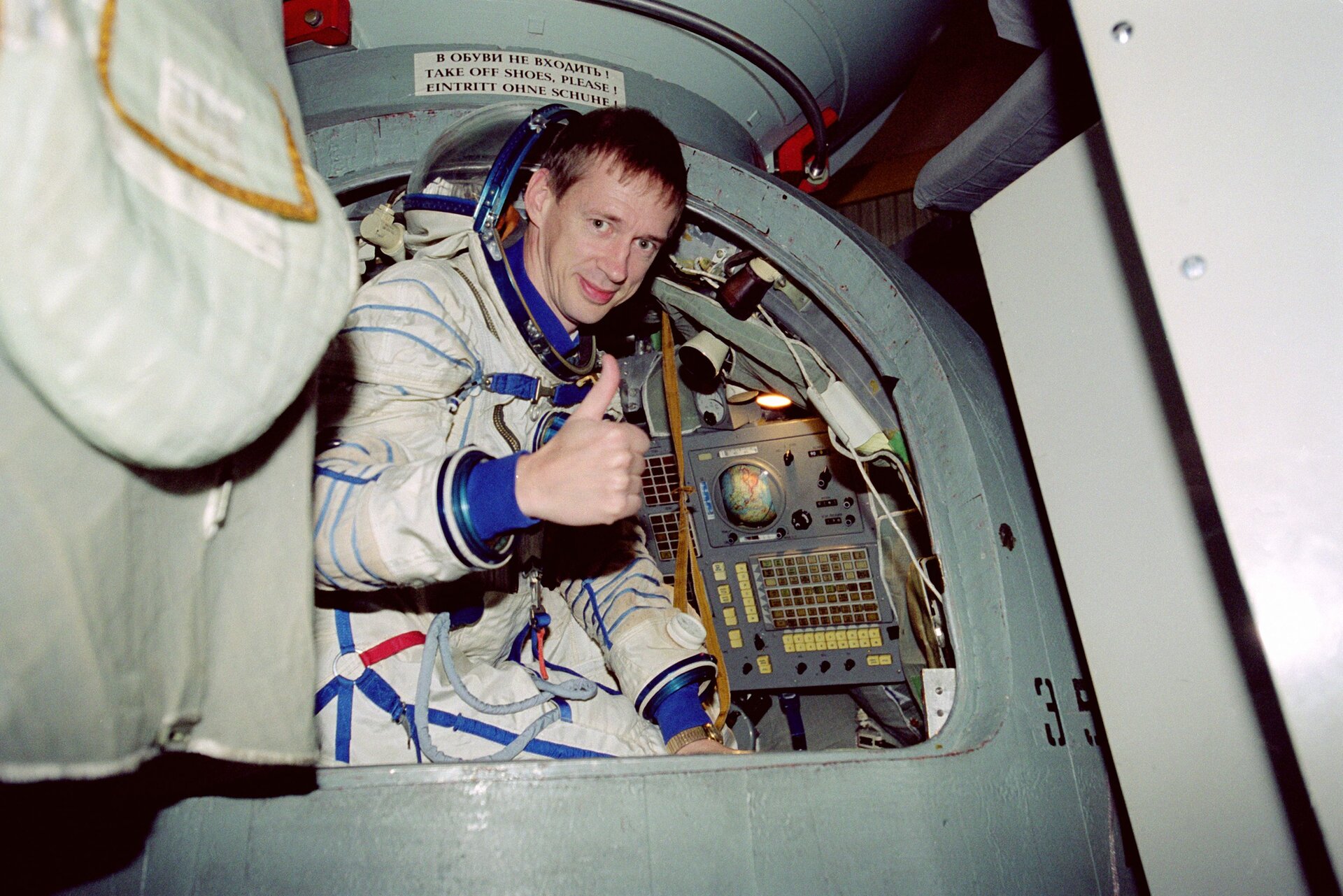ESA astronaut training in Europe for October mission to the ISS: Mission name and logo unveiled
ESA PR 37-2002. ESA astronaut Frank De Winne, from Belgium, will soon finish training at ESA's space research and technology centre (ESTEC) in the Netherlands on some of the scientific facilities he will have to work on during his flight to the International Space Station next October. On Thursday 6 June, media representatives are invited to learn more about some of the training phases and to carry out interviews.
On the same occasion, in the presence of Mr Charles Picqué, Belgian Minister for Scientific Research, Mr Yvan Ylieff, Belgian Commissioner in charge of Scientific Policy and Mr Ernst Messerschmid, Head of ESA's European Astronaut Centre, the mission's name and logo will be unveiled (see attached programme).
Frank De Winne will be flight engineer on a Soyuz "taxi flight" to the International Space Station, an 8 to 10-day mission scheduled for late October, and funded by the Belgian Federal Office for Scientific, Technical and Cultural Affairs (OSTC). The main purposes of the mission will be to replace the Russian Soyuz vehicle, which serves as the emergency rescue craft for the Station's crew, with a modernised version (Soyuz TM-A), to carry out substantial scientific experiment programme and promote valuable international cooperation.

The next Space Shuttle to lift off to the International Space Station (target launch date: 30 May) will be carrying an important piece of European hardware: the Microgravity Science Glovebox (MSG). The ESA Glovebox will be used in October by Frank De Winne and will enable astronauts to handle a variety of materials and perform experiments on combustion, fluids and biotechnology safely in a microgravity environment. It can also be used to carry out minor repairs and service hardware where necessary.
The MSG facility was built for NASA for a projected operational life of 10 years and will be initially fitted in the United States Laboratory (Destiny). Development of the MSG was contracted to Astrium (D). Bradford Engineering (NL) built the main elements of the facility, supported by Verhaert Design & Development (B), Atos-Origin (NL) and Laben (I).
Media representatives wishing to attend the media day at ESA/ESTEC on 6 June are kindly requested to fill out the attached accreditation from and fax it back to:
Heidi Graf, Head of Corporate Communication Office
ESA/ESTEC, Noordwijk, the Netherlands
Tel. + 31 71 565 3006
Fax. + 31 71 565 5728





